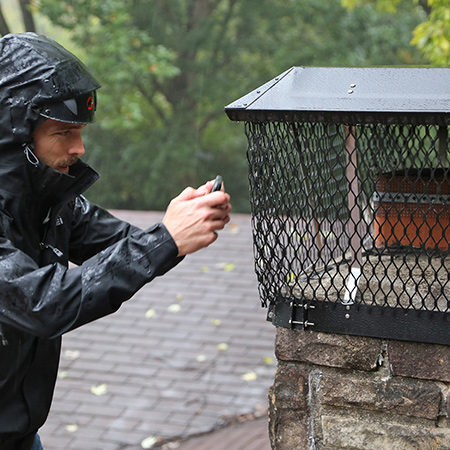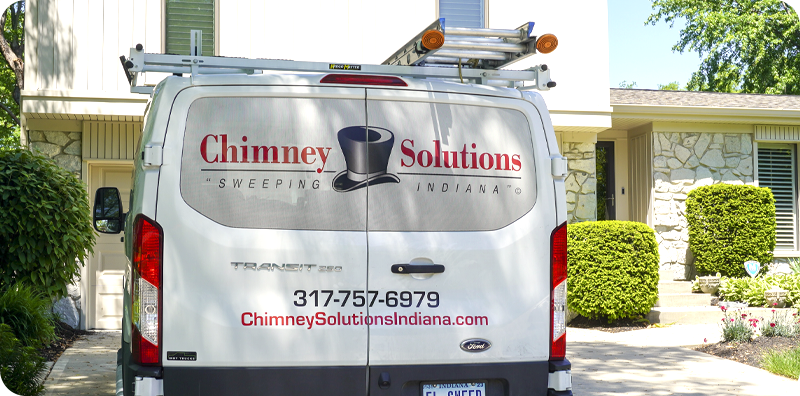Christmas is right around the corner and the temperature keeps dropping to remind us. It’s the perfect time to pull out your fireplace tools and light up the hearth. After the fire goes out, don’t forget to maintain your fireplace! Few things would be as devastating as a fire just before the holidays. If you aren’t careful, this could happen to you.
Here are the best pieces of advice from chimney experts on how to maintain a safe wood-burning fireplace:
 • Check the chimney cap, or chase cover, for signs of damage. Every chimney should have a cap on it. A chimney cap prevents pests and water from entering the flue and damaging it. It keeps out lawn debris like sticks and leaves that can clog the top of the chimney. It also stops hot embers in the smoke from escaping and igniting the roof. You should be able to see the chimney cap when you look up at the top of your home. If you notice that it looks like it is damaged or missing, it should be replaced.
• Check the chimney cap, or chase cover, for signs of damage. Every chimney should have a cap on it. A chimney cap prevents pests and water from entering the flue and damaging it. It keeps out lawn debris like sticks and leaves that can clog the top of the chimney. It also stops hot embers in the smoke from escaping and igniting the roof. You should be able to see the chimney cap when you look up at the top of your home. If you notice that it looks like it is damaged or missing, it should be replaced.
• Make sure the damper works. Before you light a fire, the damper should be opened. It is the vent that let’s smoke escape and fresh air in. When the fireplace isn’t being used, it should be closed to keep heated/cooled air in your home. During the months it isn’t used, it can get stuck or become too corroded to work properly. If you can’t get it to open, you should reach out to a professional chimney technician to fix it before using your fireplace.
• Test the airflow in the fireplace. A reverse airflow is when air in a fireplace is sucked down the chimney instead of venting out. There are a few reasons that this can happen: the chimney is too cold, the house is too tight, or the chimney is obstructed. Lighting a fire in a fireplace with a reverse airflow is dangerous. All the smoke and carbon monoxide produced by the fire that should go up the chimney will go into your home instead. It is a good idea to check the airflow in the fireplace before building a big fire. The simplest way to do this is by igniting a small piece of firewood and paying attention to where the smoke goes. If it goes straight up the chimney like usual, there isn’t a problem. If it moves towards you into the room, it is a sign there might be a problem. You should consult a fireplace expert if you find out that your chimney has a reverse airflow.
• Burn only seasoned hardwood. When you are getting ready to light a fire, be sure to only collect seasoned hardwood. Hardwoods are denser than softwoods. They burn more completely which means they produce less creosote. Maple, birch, cherry and walnut are some of the most common hardwoods in the U.S. You should only burn logs of hardwood that have been seasoned. Logs that are “seasoned” have a low moisture content because they have had at least six months to dry out after being cut down. Seasoned wood burns hotter and longer than green wood.
 • Safely remove old ashes. Ashes can burn for days after a fire goes out. That is why it is important to be extra careful when you dispose of fireplace ashes. You should wait for at least 24 hours before scooping ashes out of the fireplace. You shouldn’t ever throw them directly into the trash or outside. You should sweep them into a metal ash bucket instead. This type of bucket is made to withstand hot embers and small fires that might occur. Leave the ashes in the bucket for at least 3 days with the lid closed before getting rid of them.
• Safely remove old ashes. Ashes can burn for days after a fire goes out. That is why it is important to be extra careful when you dispose of fireplace ashes. You should wait for at least 24 hours before scooping ashes out of the fireplace. You shouldn’t ever throw them directly into the trash or outside. You should sweep them into a metal ash bucket instead. This type of bucket is made to withstand hot embers and small fires that might occur. Leave the ashes in the bucket for at least 3 days with the lid closed before getting rid of them.
• Hire a professional chimney sweep to clean and inspect it annually. Chimneys can be damaged by extreme weather, silent chimney fires, and normal wear-and-tear. It’s important to have your chimney professional inspected every year to make sure there aren’t any internal or external signs of damage that could pose a safety risk. Most CSIA-certified chimney sweeps will also clean the chimney during the inspection. No matter what type of wood you use, some creosote will build up. It is best to have it removed at least once a year since any amount of creosote is a fire hazard. The longer you wait to have creosote removed, the harder it is to get it out.
If you follow these steps, you can feel more at ease. Taking care of your fireplace is the best way to prevent a house fire and carbon monoxide poisoning.
Our Service Area
If you live within 20 miles of Marion County, there’s no need to call any other chimney provider! The team here at Chimney Solutions Indiana will be in our marked trucks and clean uniforms and at your door on time! We travel to Zionsville, Carmel, Fishers, Brownsburg, Westfield, Geist, Eagle Creek, Noblesville and all throughout the Indianapolis, IN area.
We believe that education and ongoing training is important, which is why we continuously invest in ourselves and our team to deliver better service to you. We’re Chimney Safety Institute of America (CSIA) – certified and members of the National Chimney Sweep Guild (NCSG), so whenever advancements are made within the industry, we’re among the first to know about it. When you work with Chimney Solutions, you can expect the latest information and the most advanced services and techniques. We strive to exceed expectations on every job from a routine chimney sweep and chimney cleaning to a full chimney restoration.


We’re committed to providing the best service possible and look forward to serving you and your family, year after year. Call 317-757-6979 to get started! >>